So last Sunday, I picked up a lovely bunch of acacia leaf from Tawana Thai supermarket for just one of your English pounds.
Proper name Acacia pennata, known as tsu boht in Burmese and cha om in Thai, acacia leaf tastes like heaven, but smells like absolute hell.
My husband calls it "poo weed".
In fact, the sulfurous vapours are so noxious that allegedly Thai people won't put it near mynah birds, lest the poor creatures become overwhelmed by fumes and drop dead.
It needs to be prepared pretty carefully though - tsu boht literally means "rotten thorn" in Burmese - just look at these beauties to see why:
However, if you put on a (gas) mask and some gloves, you're ready to rock.
(Thai: Kai jeaw Cha-om)
- A bunch of acacia leaf (sold as cha om in Oriental supermarkets)
- 4 eggs
- 50 ml milk (optional)
- 1 tbsp vegetable oil
- Pinch of salt
- Teeny pinch of MSG (optional)
Prepare the acacia leaf first. Wash and rinse the acacia in a colander, then pluck the fronds off carefully and discard the branches.
You should end up with a little pile of tender leaves like so:
Next whisk the eggs with the milk, salt and MSG until light and frothy.
Heat the oil in a frying pan and pour in the egg mixture. As soon as the egg begins to set, strew the acacia leaf evenly over the top of the omelette.
When the omelette is cooked through but not brown, flip it so the acacia-covered side cooks properly.
Finally slice the cha om omelette into sections and serve on steaming rice.
In Burma, this dish would be served with ngapi yayjo (a type of fish sauce similar to the italian bagna cauda) or ngapi jor (aka balachaung).
In Thailand, it's eaten with the shrimp paste and chilli dip nam prik.
You can however substitute Japanese pickles or achar as they're easier to find in the UK.
Oh and if you're wondering, the vile stench totally disappears when it's cooked ...
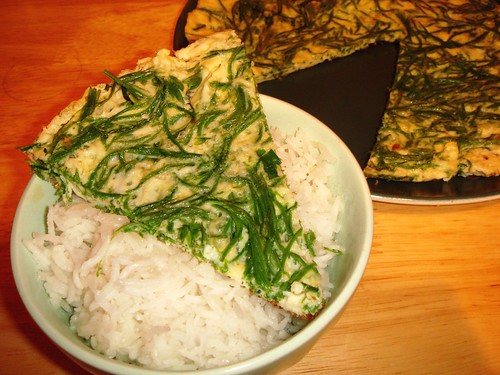
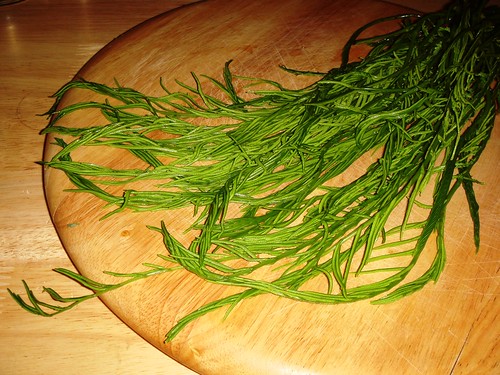
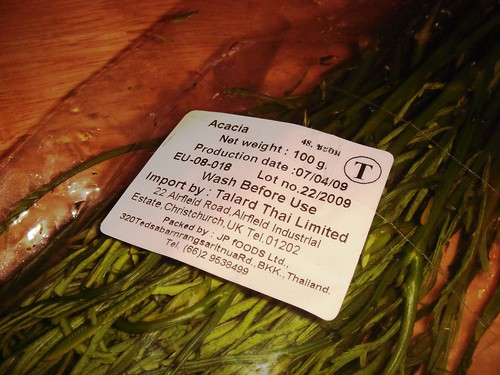
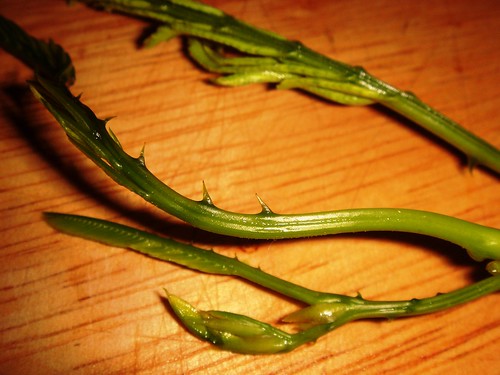
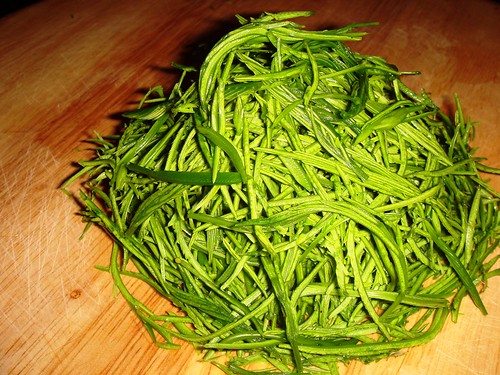

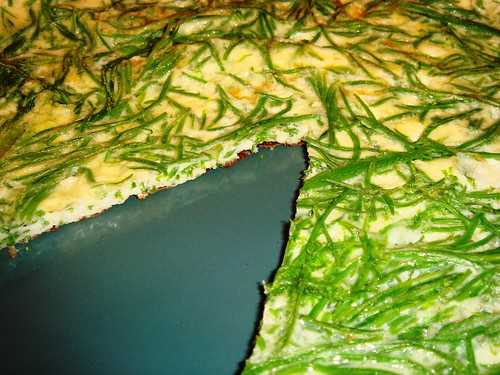
Comments
http://a2ch.wordpress.com/2009/04/21/acacia-leaf-omelette-with-shrimp-paste-dip-%E0%B8%99%E0%B9%89%E0%B8%B3%E0%B8%9E%E0%B8%A3%E0%B8%B4%E0%B8%81%E0%B8%81%E0%B8%B0%E0%B8%9B%E0%B8%B4%E0%B9%84%E0%B8%82%E0%B9%88%E0%B8%8A%E0%B8%B0%E0%B8%AD/
Oh and I'm so glad you tried the pork and beans - I'm doing a happy dance :)
meemalee xxx
Terry